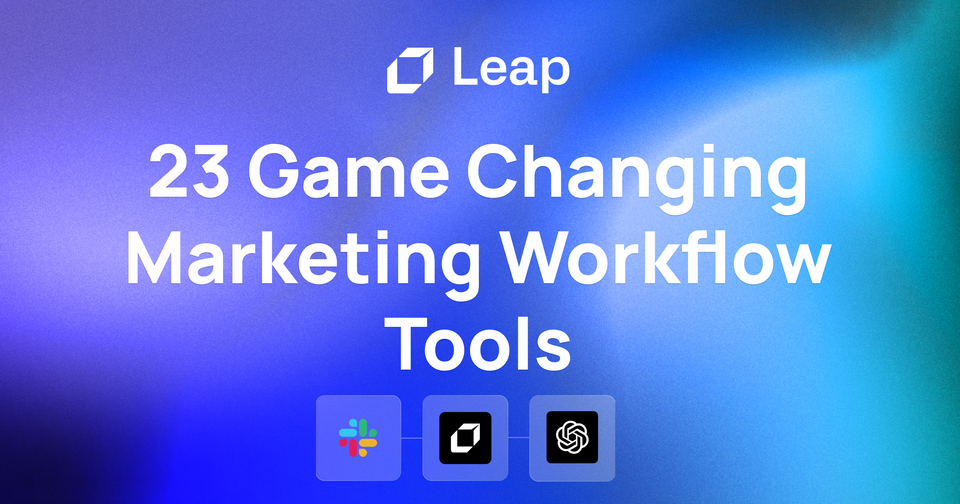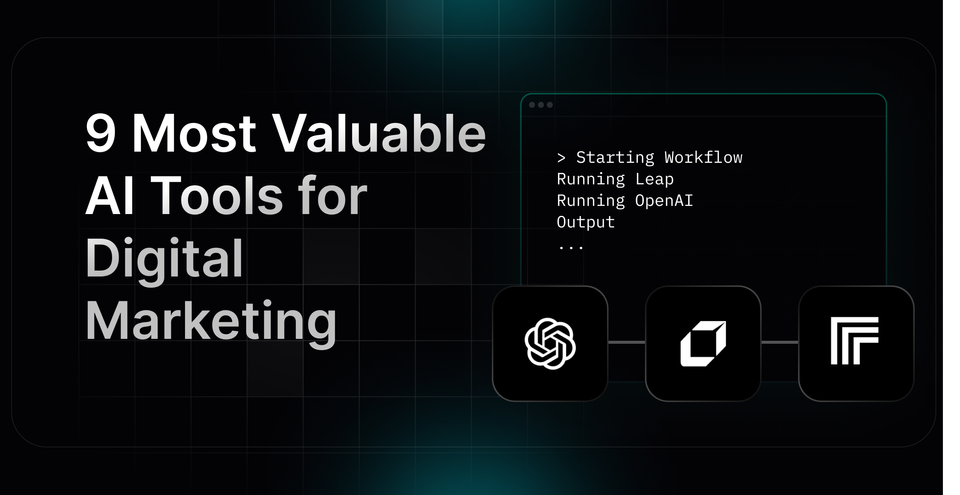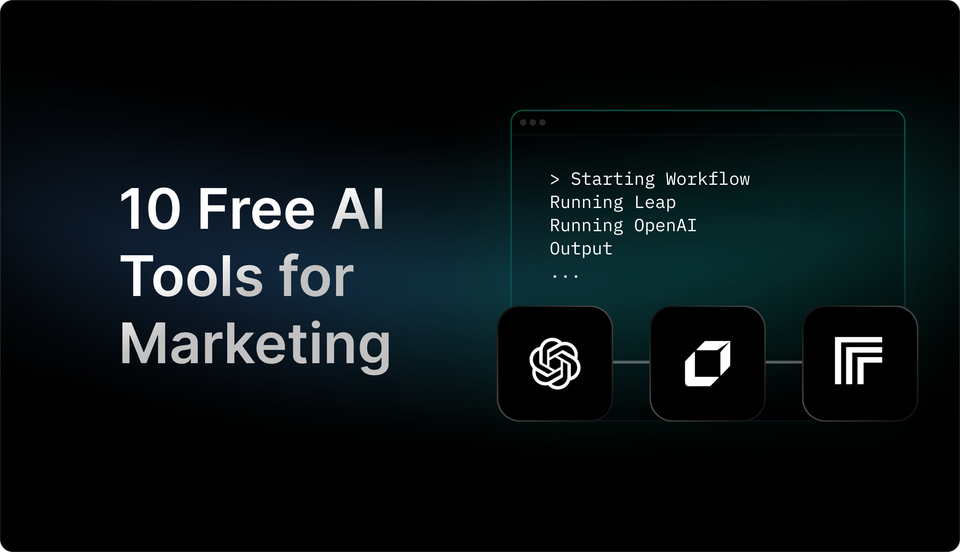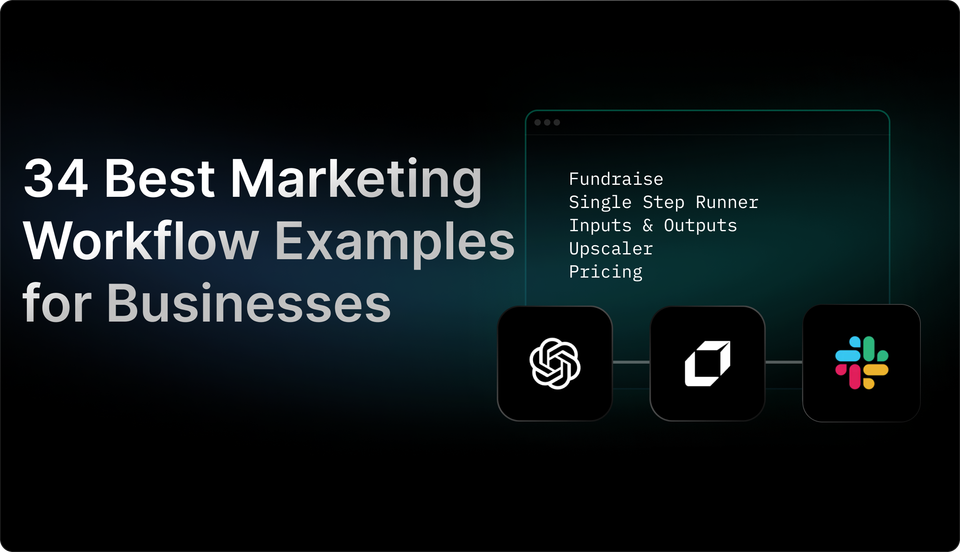33 Most Effective Email Marketing Workflows & AI Marketing Workflows Tool
Supercharge your campaigns with seamless email marketing workflows. Streamline automation for success. Elevate your strategy effortlessly!
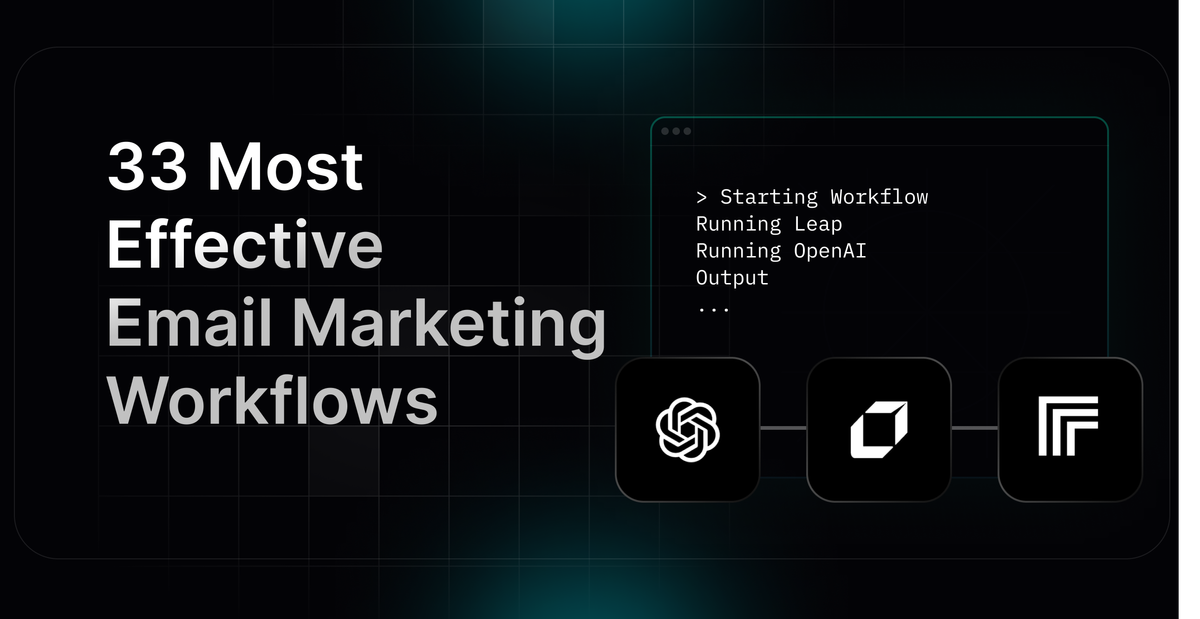
In the fast-paced world of digital marketing, staying ahead of the curve is key. And when it comes to engaging with your target audience, email marketing workflows are an essential tool in your arsenal. From nurturing leads to driving conversions, a well-crafted marketing workflow can be the secret weapon that takes your campaigns to new heights.
But what exactly are email marketing workflows? Simply put, they are a series of automated emails that are sent to your subscribers based on their behavior, preferences, or specific triggers. These workflows allow you to deliver personalized content at the right time, ensuring that your message resonates with your audience and drives the desired action.
Whether you're new to email marketing or a seasoned pro, understanding and implementing effective marketing workflows can elevate your campaigns from good to great. So, let's dive in and explore the world of email marketing workflows, and discover how they can revolutionize your marketing strategy.

What Is An Email Marketing Workflow?
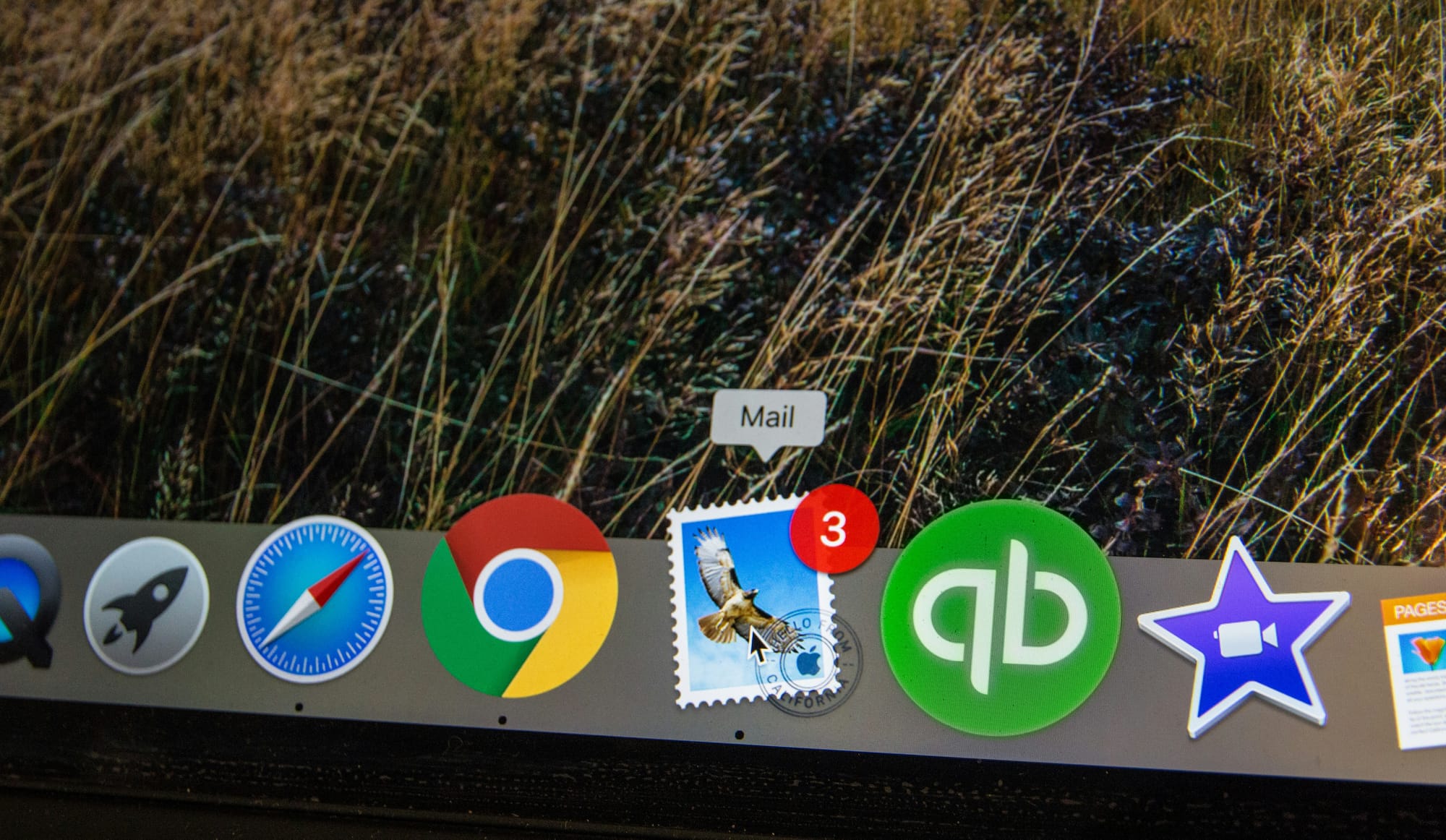
Email marketing workflows are a powerful tool for businesses to effectively manage and automate their email marketing campaigns. By creating a series of connected and automated emails, businesses can reach their target audience at the right time with personalized and relevant content. This not only improves engagement and conversion rates but also helps to build strong relationships with customers.
1. Streamlining Communication
Email marketing workflows allow businesses to streamline their communication process by automating certain tasks. This saves time and effort, as marketers no longer have to manually send individual emails to each subscriber.
Instead, they can set up a workflow that automatically triggers emails based on specific criteria, such as a new subscriber, a completed purchase, or an abandoned cart. This ensures that the right message is delivered to the right person at the right time, without any manual intervention.
2. Personalizing the Customer Experience
One of the key benefits of email marketing workflows is the ability to personalize the customer experience. By segmenting subscribers based on their interests, preferences, or actions, businesses can create targeted email campaigns that resonate with each individual.
Personalized emails are more likely to grab the attention of recipients and drive them to take the desired action, whether it's making a purchase, signing up for a webinar, or downloading a resource. This not only increases conversion rates but also strengthens the relationship between the business and its customers.
3. Nurturing Leads and Customers
Email marketing workflows are an effective tool for nurturing leads and customers throughout their journey. By delivering a series of relevant and valuable content, businesses can guide prospects from the awareness stage to the purchase stage. For example, a workflow can be set up to send a welcome email to new subscribers, followed by a series of educational emails to build trust and credibility.
As leads move further down the funnel, the workflow can be adjusted to send promotional emails or exclusive offers. By nurturing leads and customers with targeted content, businesses can increase engagement, loyalty, and ultimately, conversions.
4. Analyzing and Optimizing Performance
Email marketing workflows provide businesses with valuable insights into the performance of their campaigns. By tracking metrics such as open rates, click-through rates, and conversion rates, marketers can identify what works and make data-driven decisions to optimize their workflows.
For example, if a particular email in the workflow has a low open rate, marketers can experiment with different subject lines or content to improve engagement. By continuously analyzing and optimizing their workflows, businesses can maximize the effectiveness of their email marketing campaigns and drive better results.
Email marketing workflows offer numerous benefits for businesses. By streamlining communication, personalizing the customer experience, nurturing leads and customers, and analyzing performance, businesses can effectively engage their audience, drive conversions, and build strong relationships with their customers. With the right strategy and tools in place, email marketing workflows can be a valuable asset for businesses looking to maximize the impact of their email marketing efforts.
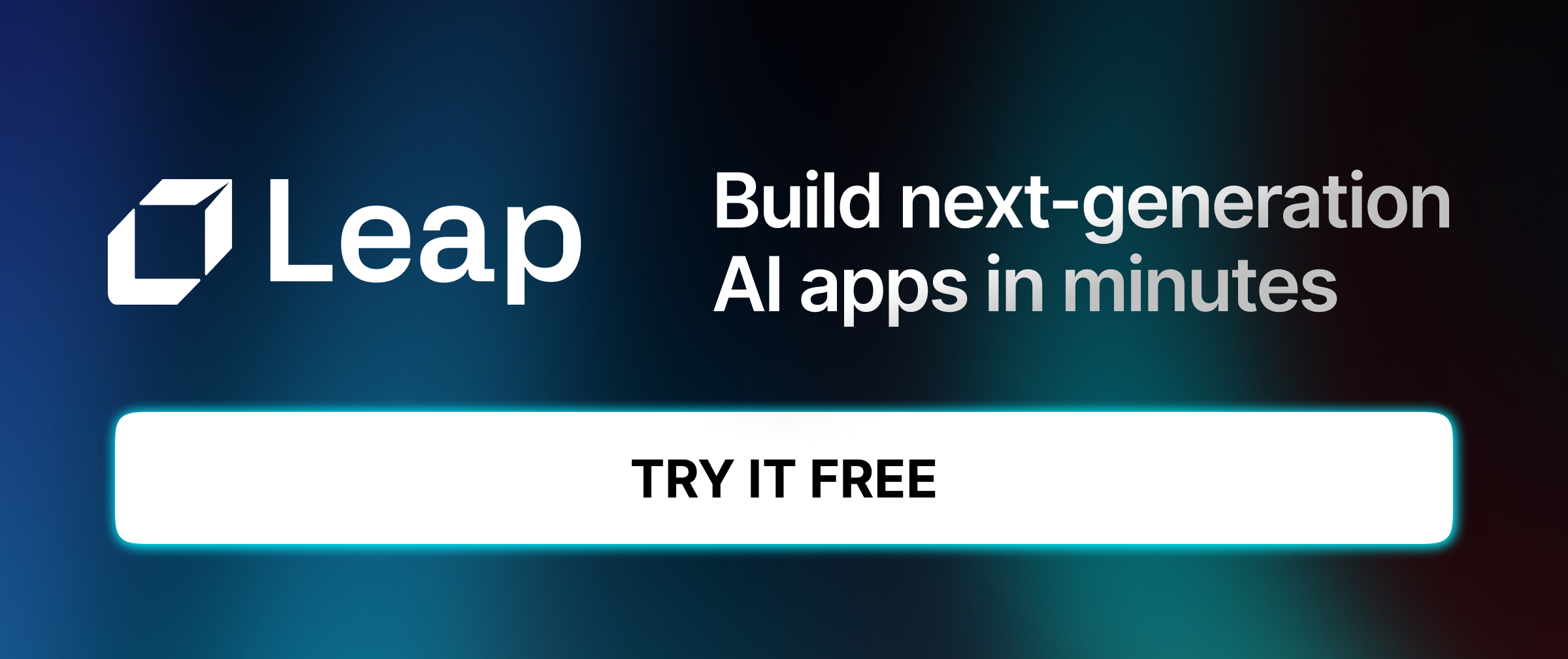
Related Reading
How To Define Goals and Objectives for Your Email Marketing Workflow
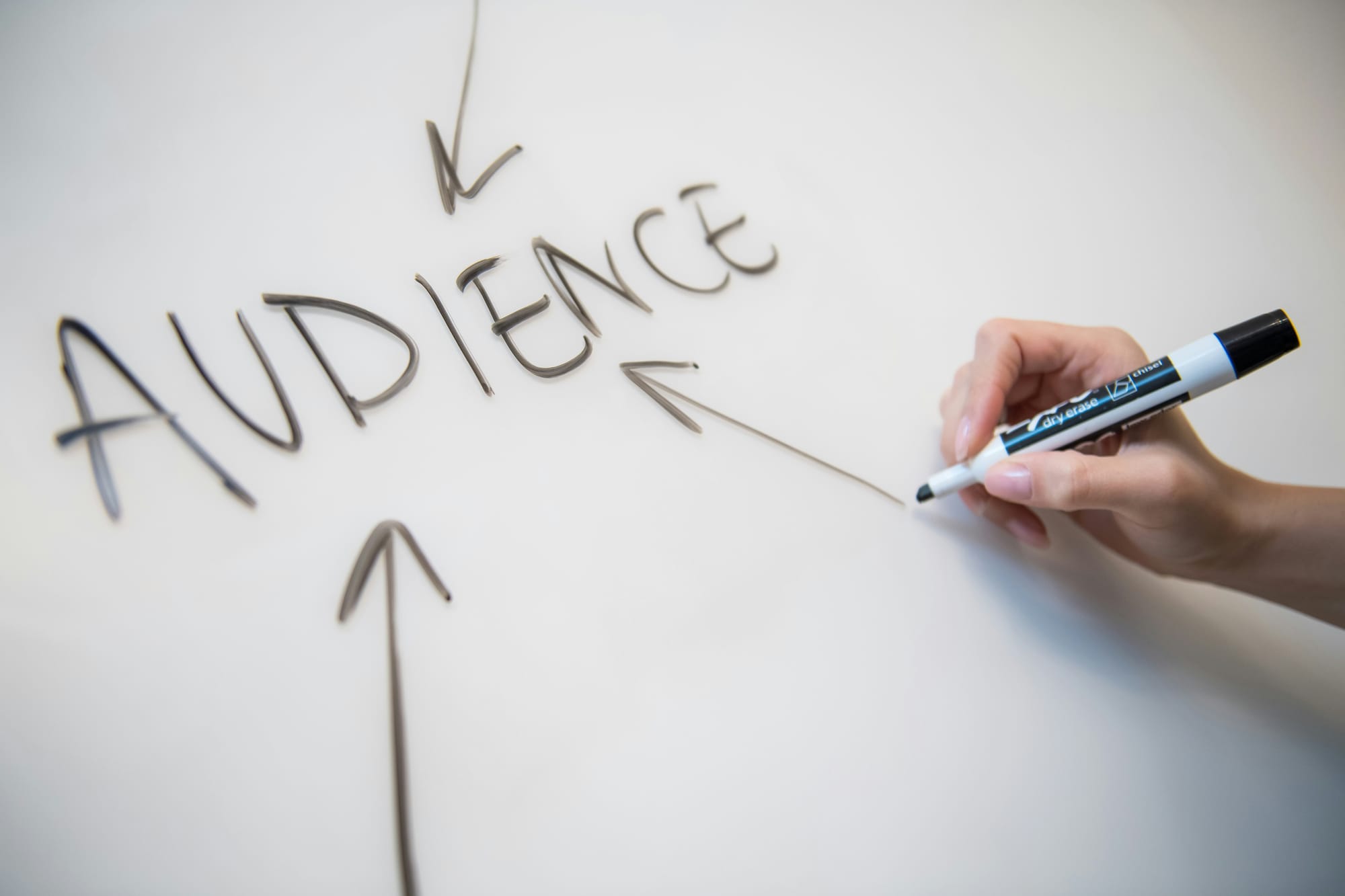
When it comes to email marketing workflows, it is crucial for business owners to define clear goals and objectives that align with their overall marketing strategy. By doing so, they can maximize the effectiveness and impact of their email campaigns. Here are some key considerations for defining specific goals and objectives for email marketing workflows:
1. Increasing Customer Engagement and Retention
One primary goal of an email marketing workflow is to engage existing customers and encourage their ongoing loyalty. By delivering relevant and personalized content, businesses can keep customers engaged, build trust, and increase their likelihood of repeat purchases. The objective here could be to improve open rates, click-through rates, and overall customer satisfaction.
2. Driving Conversion and Sales
Email marketing workflows can also be designed to drive conversions and increase sales. Whether it's promoting a specific product or service, offering exclusive discounts, or introducing new offerings, the goal is to motivate recipients to take action and make a purchase. Objectives could include increasing conversion rates, tracking revenue generated from email campaigns, or measuring the return on investment (ROI).
3. Lead Generation and Nurturing
Email workflows can play a crucial role in generating leads and nurturing them towards conversion. By implementing lead capture forms, offering valuable content downloads, and strategically nurturing leads through targeted email sequences, businesses can build relationships with potential customers and move them along the sales funnel. Key objectives in this area could be increasing the number of leads generated, improving lead quality, and shortening the sales cycle.
4. Enhancing Brand Awareness and Reputation
Email marketing workflows can also be effective in building brand awareness and enhancing a company's reputation. By consistently delivering valuable and informative content, businesses can position themselves as industry leaders and trusted sources of information. Objectives here might include increasing email subscriber numbers, growing social media followers, or measuring brand sentiment and customer feedback.
5. Improving Customer Segmentation and Personalization
A well-defined email marketing workflow allows for effective customer segmentation and personalization. By analyzing customer data, businesses can tailor their email content to different audience segments, delivering messages that resonate with specific demographics or interests. Objectives in this area may involve improving customer segmentation accuracy, increasing personalization rates, and optimizing email targeting.
6. Monitoring and Analyzing Key Metrics
It is essential for business owners to define objectives related to monitoring and analyzing key email marketing metrics. By regularly tracking and analyzing performance data, businesses can identify areas of improvement, make data-driven decisions, and refine their email marketing strategies. Objectives could include increasing email open and click-through rates, reducing unsubscribe rates, or improving deliverability and inbox placement rates.
By defining specific goals and objectives for email marketing workflows, business owners can align their efforts with their overall marketing strategy. It enables them to measure success, track progress, and make informed decisions to optimize their email campaigns. Ultimately, well-defined goals and objectives serve as a roadmap to guide businesses towards achieving their desired outcomes in email marketing.
33 Most Effective Email Marketing Workflows

1. Welcome Workflow
Engage new subscribers with a warm welcome email, introduce your brand's story, and offer a special incentive to encourage them to make their first purchase.
2. Abandoned Cart Workflow
Remind customers about the items they left in their cart, highlight the benefits of completing the purchase, and offer a time-limited discount to urge them to convert.
3. Product Recommendations Workflow
Based on customers' browsing and purchase history, send personalized product recommendations that align with their interests and preferences.
4. Post-Purchase Thank You Workflow
Express gratitude for customers' recent purchase, provide order details, and offer helpful tips on how to maximize the product's benefits.
5. Upsell/Cross-sell Workflow
Identify complementary products or upgrades to recommend to customers based on their previous purchases, highlighting the added value and benefits they can enjoy.
6. Loyalty Program Workflow
Encourage customer loyalty by offering exclusive rewards, personalized offers, and early access to new products or promotions.
7. Re-engagement Workflow
Win back inactive subscribers by sending targeted emails that remind them of the value your brand provides and offer a unique incentive to re-engage.
8. Birthday Workflow
Celebrate customers' special day by sending a personalized birthday email with a special discount, gift, or offer to make them feel appreciated.
9. Customer Anniversary Workflow
Acknowledge and celebrate the milestone of being a customer for a year or longer, offering a special promotion or reward as a token of appreciation.
10. Seasonal/Holiday Campaign Workflow
Create timely and relevant email campaigns for major holidays or seasons, offering exclusive promotions, limited-time sales, or holiday-themed content.
11. Educational/Nurturing Workflow
Provide valuable and educational content to nurture leads and build credibility, offering actionable tips and insights related to your industry or niche.
12. Product Launch Workflow
Generate excitement around a new product or service by sending a series of emails that build anticipation, share sneak peeks, and offer exclusive pre-order offers.
13. Replenishment Workflow
Remind customers to repurchase consumable products they have previously bought, emphasizing the convenience and time-saving benefits of reordering.
14. VIP/Exclusive Offers Workflow
Reward your most loyal customers with exclusive discounts, early access to new products, or exclusive events to make them feel appreciated and valued.
15. Referral Program Workflow
Encourage customers to refer their friends and family by offering incentives such as discounts, freebies, or rewards for successful referrals.
16. Lead Magnet Workflow
Nurture leads who have downloaded a free resource by sending a series of follow-up emails that provide additional valuable content and gradually introduce your products or services.
17. Webinar/Event Workflow
Promote a webinar or event by sending a series of emails that highlight the benefits of attending, provide key details, and offer exclusive bonuses for registrants.
18. Survey/Feedback Workflow
Collect feedback from customers by sending a personalized email requesting their insights, offering incentives such as discounts or entry into a giveaway.
19. Win-back Workflow
Re-engage with lapsed customers by sending a series of emails that remind them of the benefits they enjoyed in the past and offer a special incentive to return.
20. Social Proof/Testimonial Workflow
Showcase positive reviews, testimonials, or user-generated content to build trust, credibility, and social proof, encouraging potential customers to convert.
21. VIP Early Access Workflow
Provide VIP customers with early access to exclusive sales, limited-edition products, or special events, making them feel valued and privileged.
22. Educational Course Workflow
Deliver a series of educational emails that provide in-depth knowledge, step-by-step tutorials, or valuable tips related to a specific topic, gradually building trust and positioning your brand as an expert.
23. Anniversary/Birthday Discount Workflow
Celebrate customers' milestone anniversaries or birthdays by offering a personalized discount or exclusive offer as a token of appreciation.
24. Customer Feedback Loop Workflow
Encourage customers to provide feedback on their recent purchase or experience, showing that you genuinely care about their opinions and are committed to continuous improvement.
25. Personalized Re-engagement Workflow
Re-engage inactive subscribers with highly personalized emails that leverage their previous interactions, purchases, or preferences to spark their interest and encourage them to take action.
26. Flash Sale Workflow
Create a sense of urgency and excitement by sending time-limited flash sale emails that offer significant discounts or exclusive deals for a short period.
27. Onboarding Workflow
Guide new customers through a step-by-step onboarding process, providing helpful resources, tutorials, and tips to ensure they maximize the value of your product or service.
28. Seasonal Clearance Workflow
Clear out seasonal inventory by offering exclusive discounts, bundle deals, or limited-time offers to create a sense of urgency and encourage conversions.
29. Exclusive Partner Offers Workflow
Collaborate with complementary brands or partners to offer exclusive discounts, bundle deals, or joint promotions, expanding your reach and attracting new customers.
30. Case Study/Testimonial Workflow
Share success stories, case studies, or customer testimonials that showcase the benefits and results your product or service has delivered, sparking interest and trust.
31. Loyalty Milestone Rewards Workflow
Celebrate customers' loyalty milestones (e.g., reaching a certain number of purchases or total spend) by offering exclusive rewards, personalized discounts, or special surprises.
32. Influencer Collaboration Workflow
Collaborate with influencers or industry experts to create exclusive content, offer limited-time discounts, or host joint contests to tap into their audience and boost conversions.
33. VIP Exclusive Content Workflow
Provide VIP customers with exclusive content, such as behind-the-scenes access, insider tips, or sneak peeks, making them feel valued and part of an inner circle.
Related Reading
- Content Marketing Workflow
- Marketing Workflow Management
- Marketing Automation Workflows
- Digital Marketing Agency Workflow
- Digital Marketing Workflows
- Marketing Workflow Examples
Benefits of Automating Email Marketing Workflows

Email marketing workflows are essential tools for any business looking to build and maintain strong relationships with customers. Automating these workflows can provide numerous benefits for business owners, helping them save time, increase efficiency, and drive better results. We will explore the various advantages of automating email marketing workflows.
1. Improved Efficiency
Automating email marketing workflows allows business owners to streamline their processes and eliminate manual tasks. With automation, you can set up a series of emails that are triggered by specific actions or events, such as a customer making a purchase or signing up for a newsletter.
This eliminates the need for manual intervention and ensures that the right message is sent to the right person at the right time. By reducing manual work, business owners can focus on other critical aspects of their business, leading to improved overall efficiency.
2. Personalization at Scale
One of the key benefits of automating email marketing workflows is the ability to personalize messages at scale. Automation tools allow you to segment your audience based on various criteria, such as demographics, purchase history, or engagement level.
By sending targeted and personalized emails to different segments of your audience, you can increase engagement and conversion rates. Personalized emails make customers feel valued and understood, leading to stronger relationships and increased loyalty.
3. Increased Engagement and Conversion Rates
Automation enables businesses to send timely and relevant emails to their subscribers, resulting in increased engagement and conversion rates. By sending automated follow-up emails to customers who have shown interest in a product or abandoned their shopping carts, you can remind them of their initial intent and encourage them to take action. Automation allows you to send targeted offers and promotions to specific segments of your audience, further increasing the chances of conversion.
4. Enhanced Customer Experience
Automating email marketing workflows enables businesses to deliver a seamless and consistent customer experience. By sending automated welcome emails, onboarding sequences, or post-purchase follow-ups, you can ensure that your customers receive the information they need at every stage of their journey.
This improves customer satisfaction and helps build long-term relationships. Automation also allows you to provide timely and relevant content, such as helpful tips or personalized recommendations, further enhancing the overall customer experience.
5. Data-Driven Insights
Automated email marketing workflows generate valuable data and insights that can help business owners make informed decisions. By tracking email open rates, click-through rates, and conversion rates, you can assess the effectiveness of your campaigns and make necessary adjustments.
Automation tools often provide detailed analytics and reporting features, allowing you to measure the performance of your emails and optimize your strategies accordingly. Data-driven insights enable businesses to refine their email marketing efforts and continuously improve their results over time.
Automating email marketing workflows offers numerous benefits for business owners. From improved efficiency and personalization at scale to increased engagement, conversion rates, and enhanced customer experience, automation can significantly impact the success of your email marketing campaigns. By leveraging automation tools and strategies, you can save time, increase productivity, and drive better results for your business.
How To Measure An Email Marketing Workflow

Implementing an effective email marketing workflow is crucial for businesses to engage with their audience and drive conversions. It is equally important to measure the success of these workflows to ensure they are delivering the desired results. By establishing key performance indicators (KPIs), business owners can evaluate the effectiveness of their email marketing campaigns and make data-driven decisions to optimize their strategies.
1. Open Rate: The Gateway to Engagement
The open rate is the percentage of recipients who open your emails. It serves as the initial indicator of engagement and can help you gauge the effectiveness of your subject lines and preview text.
A high open rate suggests that your emails are captivating and relevant to your subscribers. To improve this KPI, consider using personalized subject lines, A/B testing different variations, and segmenting your audience based on their interests.
2. Click-Through Rate (CTR): Driving Traffic to Your Website
The click-through rate measures the percentage of recipients who click on a link within your email. It indicates the level of interest and engagement generated by your content. A high CTR implies that your email content and calls-to-action are compelling and persuasive.
To boost your CTR, ensure that your emails have clear and compelling calls-to-action, use visually appealing buttons, and optimize your landing pages to provide a seamless user experience.
3. Conversion Rate: Turning Subscribers into Customers
The conversion rate measures the percentage of recipients who complete a desired action, such as making a purchase, filling out a form, or downloading a resource. It reveals the ultimate effectiveness of your email marketing workflow in driving tangible results.
To optimize this KPI, ensure that your emails have clear and persuasive messaging, align your email content with your landing pages, and provide incentives or exclusive offers to encourage conversions.
4. Unsubscribe Rate: Retaining Your Audience
The unsubscribe rate measures the percentage of recipients who opt-out of receiving your emails. While some level of attrition is inevitable, a high unsubscribe rate may indicate that your emails are not meeting the expectations or interests of your subscribers.
To minimize unsubscribes, ensure that your email content remains relevant and valuable, segment your audience to deliver personalized content, and regularly review and clean your email list to remove inactive or disengaged subscribers.
5. Bounce Rate: Ensuring Deliverability
The bounce rate measures the percentage of emails that are not successfully delivered to the recipient's inbox. High bounce rates can negatively impact the deliverability of your emails and hinder your overall email marketing success.
To reduce bounces, regularly clean your email list by removing invalid or inactive email addresses, use double opt-in processes to ensure the accuracy of subscriber information, and monitor your sender reputation and email authentication practices.
6. Revenue per Email (RPE): Evaluating ROI
Revenue per email (RPE) measures the amount of revenue generated for every email sent. It provides insight into the monetary value of your email marketing efforts. To increase RPE, focus on improving your conversion rate and average order value, segment your audience to deliver targeted and personalized offers, and leverage upselling and cross-selling opportunities in your email campaigns.
7. Customer Lifetime Value (CLTV): Long-term Success
Customer lifetime value (CLTV) measures the total revenue generated by a customer over their entire relationship with your business. While not directly tied to email marketing workflows, CLTV can provide valuable insights into the long-term impact of your email campaigns on customer retention and loyalty. By tracking CLTV, you can identify the segments or strategies that yield higher value customers and allocate resources accordingly.
Measuring the success of your email marketing workflows through key performance indicators (KPIs) is essential for business owners. By monitoring and analyzing metrics such as open rate, click-through rate (CTR), conversion rate, unsubscribe rate, bounce rate, revenue per email (RPE), and customer lifetime value (CLTV), you can gain valuable insights into the effectiveness of your email campaigns and make data-driven decisions to optimize your strategies and drive tangible results.
How To Segment Your Email List for Targeted Workflows

Segmenting your email list is a crucial step in creating effective email marketing workflows. By dividing your audience into smaller, more targeted groups, you can tailor your email content and messages to their specific interests, needs, and preferences. Here are some strategies to help you segment your email list effectively:
1. Demographic Segmentation
Divide your email list based on demographic factors such as age, gender, location, or occupation. This information can be collected through sign-up forms or surveys. By understanding the characteristics of your subscribers, you can create more personalized and relevant content.
2. Behavioral Segmentation
Consider segmenting your email list based on your subscribers' past interactions and behaviors. This can include their purchase history, browsing patterns, or engagement with previous emails. By grouping subscribers with similar behavior, you can send targeted emails that address their specific interests or needs.
3. Preference Segmentation
Allow your subscribers to express their preferences by giving them options to choose from. For example, you can ask them to select their preferred content topics or frequency of emails. This helps you understand their preferences and deliver content that resonates with them.
4. Lead Magnet Segmentation
Segment your email list based on the lead magnets that attracted your subscribers in the first place. If you offer different resources or incentives to capture leads, grouping them based on their interests can help you send relevant content and nurture them further.
5. Engagement Segmentation
Categorize your subscribers based on their level of engagement with your emails. This can include metrics such as open rates, click-through rates, or conversion rates. By identifying highly engaged subscribers, you can create workflows that reward them or offer exclusive content.
6. Customer Lifecycle Segmentation
Consider segmenting your email list based on where subscribers are in their customer journey. This can include prospects, new customers, repeat customers, or lapsed customers. By sending targeted emails based on their stage in the buying cycle, you can nurture leads and encourage repeat purchases.
7. Personalized Segmentation
Go beyond basic segmentation and create more personalized email workflows. Utilize information such as subscribers' names, birthdays, or anniversaries to send customized messages. Personalization can enhance the customer experience and build stronger connections.
Effective segmentation is an ongoing process. Continuously analyze your email metrics and update your segments based on the changing needs and behaviors of your subscribers. By segmenting your email list for targeted workflows, you can deliver more relevant content, boost engagement, and ultimately drive better results for your email marketing campaigns.
The Importance of Creating Engaging and Personalized Email Content

When it comes to email marketing workflows, one of the most crucial aspects is crafting engaging and personalized email content that resonates with your audience. By delivering relevant and interesting content, you can build stronger relationships with your subscribers, increase open and click-through rates, and ultimately drive conversions. Here are some tips on how to create compelling email content that will captivate your audience:
1. Know Your Audience
To create personalized email content, it's essential to have a deep understanding of your audience. Conduct thorough market research and analyze your subscribers' preferences, demographics, and behavior. This will help you tailor your content to their specific needs, interests, and pain points.
2. Segment Your Email List
Segmenting your email list allows you to send targeted content to different groups of subscribers. By dividing your audience based on factors such as demographics, purchase history, or engagement level, you can send more relevant and personalized emails. For example, you can create a segment for customers who have recently made a purchase and send them exclusive offers or product recommendations.
3. Craft Compelling Subject Lines
The subject line is the first thing your subscribers see, so it needs to grab their attention and entice them to open the email. Use action words, personalization, and a sense of urgency to make your subject lines stand out. Experiment with different techniques, such as posing questions, using emojis, or creating curiosity gaps, to increase open rates.
4. Personalize Email Content
Personalization goes beyond just using your subscriber's name in the email. Tailor the content to their interests and preferences by leveraging the data you have collected. Consider sending personalized product recommendations, relevant blog articles, or exclusive offers based on their previous interactions with your brand.
5. Use Engaging Visuals
Incorporating eye-catching visuals can enhance the overall appeal of your email content. Include relevant images, GIFs, or videos to grab attention and make your emails more visually appealing. Make sure the visuals align with your brand's tone and image, and optimize them for mobile devices to ensure a seamless user experience.
6. Write Compelling Copy
Your email copy should be concise, engaging, and easy to read. Use a conversational tone that resonates with your audience and tells a story. Highlight the benefits of your products or services and address your subscribers' pain points. Use clear and compelling call-to-action (CTA) buttons to guide them towards the desired action.
7. A/B Test Your Emails
A/B testing is a valuable technique to optimize your email content. Experiment with different variations of subject lines, email copy, visuals, and CTAs to see what resonates best with your audience. Test one element at a time to identify the most effective strategies and continuously improve your email marketing workflows.
By implementing these tips, you can create engaging and personalized email content that resonates with your audience, resulting in higher open rates, click-through rates, and conversions. Remember to continuously analyze and refine your approach based on subscriber feedback and data to ensure ongoing success in your email marketing campaigns.
Designing Visually Appealing Email Templates

When it comes to designing visually appealing email templates for email marketing workflows, there are several key approaches that businesses can take to ensure their emails stand out and capture the attention of their audience. Let's explore some of these approaches:
1. Incorporate a Clean and Cohesive Design
A well-designed email template should have a clean and cohesive layout. Use a consistent color scheme, typography, and branding elements throughout the email to create a professional and visually appealing look. This helps to establish brand recognition and reinforce your brand's identity.
2. Use Eye-catching Graphics and Images
Including eye-catching graphics and images can significantly enhance the visual appeal of your email templates. It's essential to strike a balance and not overload the email with too many visuals that may distract or overwhelm the reader. Choose visuals that are relevant to your content and help convey your message effectively.
3. Optimize for Mobile Devices
Mobile optimization is crucial for email marketing workflows, as a significant portion of recipients will be viewing emails on their smartphones or tablets. Ensure that your email templates are fully responsive, meaning that they adapt seamlessly to different screen sizes and devices. This will provide a better reading experience and improve engagement with your emails.
4. Use White Space
White space refers to the empty areas surrounding your content. It helps provide separation and improves readability. Incorporating sufficient white space in your email templates allows your message to breathe, making it easier for readers to scan and understand the content. Avoid cluttered designs that may overwhelm your audience.
5. Focus on Clear Call-to-Actions (CTAs)
A compelling call-to-action is a vital component of any email marketing workflow. Make sure your CTAs are visually prominent and stand out from the rest of the content. Use contrasting colors, large fonts, or buttons to draw attention to your CTAs. Provide a clear and concise message to encourage recipients to take the desired action.
6. Personalize and Segment Your Emails
Personalization and segmentation can significantly improve the effectiveness of your email marketing workflows. Tailor your email templates to specific segments of your audience, using personalized content, such as the recipient's name, location, or purchase history. This level of personalization helps to create a sense of exclusivity and relevance, increasing engagement and conversions.
7. Test and Optimize
Testing different elements of your email templates, such as subject lines, visuals, and CTAs, is crucial for optimizing their performance. A/B testing allows you to compare different versions of your email templates and identify which elements resonate best with your audience. Use the insights gained from testing to continually refine and improve your email marketing workflows.
Designing visually appealing email templates for email marketing workflows requires a strategic approach. By incorporating clean and cohesive designs, eye-catching visuals, mobile optimization, white space, clear CTAs, personalization, and continuous testing, businesses can create captivating email templates that effectively engage their audience and drive desired actions.
Common Challenges When Implementing Email Marketing Workflows & How To Mitigate Them

1. Lack of Proper Planning and Strategy
One common challenge when implementing email marketing workflows is a lack of proper planning and strategy. Without a well-thought-out plan, businesses may struggle to achieve their desired results. To mitigate this challenge, it is essential to set the foundation for success.
- Clearly define your goals and objectives for your email marketing campaigns. Are you looking to increase brand awareness, drive sales, or nurture customer relationships? By identifying your goals, you can design workflows that align with these objectives.
- Segment your target audience based on their preferences, demographics, or behavior. This allows you to create personalized and targeted email content that resonates with your subscribers. Utilize email marketing automation tools to streamline the process and ensure your workflows are efficient.
- Regularly analyze and optimize your workflows based on data and feedback. This will help you identify areas for improvement and make necessary adjustments to maximize your campaign's effectiveness.
2. Insufficient Data and Customer Insights
Another challenge when implementing email marketing workflows is the lack of sufficient data and customer insights. Without a deep understanding of your target audience, it can be challenging to create relevant and engaging content.
- Start by collecting and analyzing data from various sources. This includes email open rates, click-through rates, conversion rates, and customer feedback. Use this data to gain insights into your subscribers' preferences, behavior, and purchasing patterns.
- Implement lead tracking and analytics tools to capture valuable information throughout the customer journey. This will enable you to create dynamic workflows that deliver the right content at the right time.
- Consider conducting surveys or using progressive profiling techniques to gather more specific details about your subscribers.
By leveraging data and customer insights, you can personalize your email marketing workflows, resulting in higher engagement and conversion rates.
3. Inadequate Workflow Automation
Inadequate workflow automation can pose a significant challenge when implementing email marketing workflows. Manual processes can be time-consuming and prone to errors, hampering the effectiveness of your campaigns.
- Invest in a robust email marketing automation platform that offers advanced workflow capabilities. This will enable you to automate repetitive tasks, such as sending welcome emails, abandoned cart reminders, or nurturing sequences.
- Leverage features like triggered emails, autoresponders, and dynamic content to deliver targeted messages in real-time. This not only saves time but also ensures that your subscribers receive relevant and timely content.
- Regularly review and optimize your workflows to identify areas where automation can be further enhanced. Look for opportunities to streamline processes, remove bottlenecks, and improve the overall efficiency of your email marketing campaigns.
4. Deliverability and Inbox Placement
Deliverability and inbox placement remain significant challenges for businesses implementing email marketing workflows. If your emails end up in the spam folder or are not delivered at all, your efforts will be in vain.
- Maintain a healthy sender reputation by adhering to email marketing best practices. This includes obtaining permission from recipients, ensuring quality content, and managing a clean and engaged subscriber list.
- Implement double opt-in methods to confirm subscribers' consent and reduce the risk of spam complaints. Regularly monitor your email deliverability metrics, such as bounce rates and spam complaints, to identify and rectify any issues promptly.
- Follow email deliverability guidelines and standards, such as using a reputable email service provider and authenticating your domain with SPF, DKIM, and DMARC records.
Implementing email marketing workflows can be challenging, but with proper planning, data analysis, workflow automation, and attention to deliverability, businesses can overcome these obstacles and achieve success in their email marketing campaigns. By addressing these common challenges head-on, businesses can create effective workflows that engage their audience, drive conversions, and ultimately, contribute to their overall marketing objectives.
Create Game Changing Automations Today With Leap’s AI Workflows
Automating mundane and repetitive tasks is the key to efficiency and productivity in today's fast-paced business world. And when it comes to small business marketing, leveraging the power of AI can give you a significant competitive edge. That's where Leap comes in. With its cutting-edge AI capabilities and seamless integrations, Leap enables you to automate your marketing workflows like never before.
Unleash the Power of AI Automation
With Leap, you can automate a wide range of marketing tasks, allowing you to focus on strategic decision-making and creative initiatives. Whether it's summarizing documents, transcribing AI-generated call recordings, optimizing your SEO efforts, or even generating AI avatars and assets, Leap's Workflows tool has got you covered.
Summarize Documents for Quick Insights
Staying on top of the latest industry trends and competitors' strategies is crucial. Reading and analyzing lengthy reports and articles can be time-consuming. Leap's AI-powered document summarization feature comes to the rescue. By automatically summarizing documents, you can quickly extract the most relevant information, saving you valuable time and effort.
AI Call Transcription for Efficient Communication
Clear and concise communication is the backbone of successful marketing campaigns. With Leap's AI call transcription capabilities, you can effortlessly transcribe important client or team calls. This not only ensures accurate documentation but also enables you to search and analyze call transcripts for valuable insights. Say goodbye to the hassle of manual note-taking and focus on building stronger client relationships.
Unlock the Power of AI Avatars and Assets
Visual content plays a pivotal role in capturing your audience's attention and conveying your brand message effectively. Leap's AI avatar and asset generation feature allows you to create stunning visuals without the need for a graphic designer. From eye-catching social media posts to engaging website banners, you can leverage AI-powered automation to create visually appealing marketing materials in a flash.
Optimize Your SEO Efforts with Automation
Search engine optimization is a critical component of any successful marketing strategy. Staying on top of ever-changing SEO algorithms can be overwhelming. Leap's SEO automation capabilities can help you streamline your optimization efforts. From generating keyword-rich content to analyzing your website's performance, Leap's AI-powered automation ensures that your business stays ahead of the SEO game.
Seamless Integrations with Top AI Providers
Leap's partnerships with industry-leading AI providers such as OpenAI and Microsoft enable you to tap into the best-in-class AI models seamlessly. Whether you need powerful AI text analysis, image recognition, or voice translation, Leap's integrations have got you covered. Connect the tools you love with Leap's AI capabilities and experience a whole new level of automation.
Try Leap's Workflows Tool for Free Today
Ready to take your small business marketing to new heights with AI-powered automation? Give Leap's Workflows tool a try today. With its no-code interface and extensive range of AI capabilities, you can create sophisticated automations tailored to your specific marketing needs. Supercharge your existing tools and unleash the true potential of your business with Leap. Sign up now and experience the power of AI for small business marketing.

